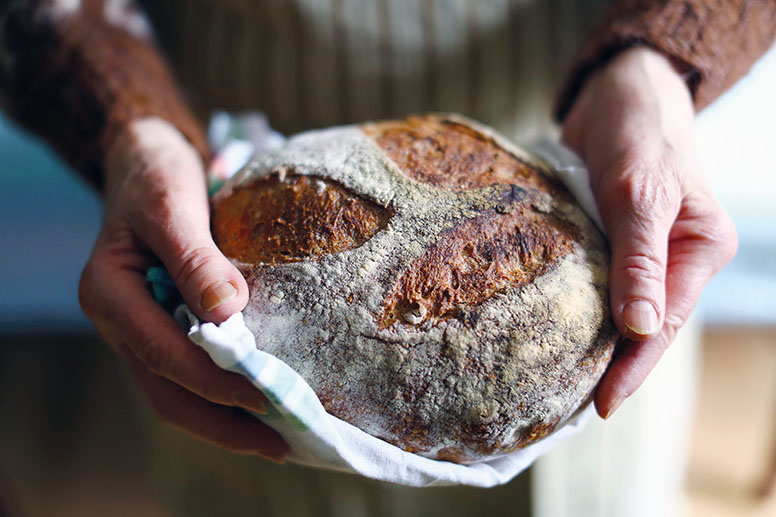There is a three-year-old that lives in my fridge. It sits there, slowly blowing bubbles and smelling oddly alcoholic. I feed it daily and in return it aids me in my quest to create the perfect loaf of sourdough.
Our starter dough at The Hole in the Wall was born the same day that I took ownership of the keys. My pastry chef took a tub of flour into the warm midsummer embrace of the surrounding fields and harvested a few natural yeasts that must have been floating around in the pollen-heavy air before returning to the kitchen and mixing in some fruit juice and water. A week later the whole lot was a sour, bubbling doughy swamp and it remains so right up until this very moment. Despite its unpredictability and sometimes diva-ish behaviour I have learnt to love my levain over the course of baking thousands of loaves.
I’m a firm believer that a good meal simply has to begin with great bread and as such I devote a significant portion of the day trying to perfect the mysterious magical art of baking. The beauty inherent in the unpredictability of making sourdough also forms the frustration – in the space of three days last week I made what I announced to be the best loaf I had ever created. Seventy-two hours later I threw an entire loaf in the bin because no amount of spin or gloss could detract from the fact that I’d created a total stinker: a loaf that was flat, airless and dense – a total waste of flour and water.
I threw an entire loaf in the bin because no amount of spin or gloss could detract from the fact that I’d created a total stinker
How is this possible though? How can the same four ingredients create a work of majestic beauty one day and something that could anchor a battleship the next? The detail is buried deep in the minutiae of the variables: hydration percentage. The age of the flour being used. The number of revolutions the dough hook makes. Whether or not the dough is enriched with fat. When the salt is added. The atmospheric pressure. The length of the first proving. The length of the second proving. The oven temperature. The hydration level of the oven. All of these factors impact on the final result and I find that I am constantly tweaking one or another of them to try to nail down the precise equation for consistent, excellent bread.
Unfortunately I haven’t yet discovered this magic formula but the happy result of this is that the bread – barring the occasional exception – keeps getting better and better and is always throwing up neat little twists and surprises depending on which of the above I have played around with and what sort of mood I am in. The dogmatic, puritanical, slow-food loving side of me adores creating a fully naturally leavened sourdough – a two-day fridge-based affair that results in a thick chewy crust and a rich acid-tinged flavoured crumb pocked with giant air bubbles. But other times I want something less challenging, less toothsome, altogether lighter and softer and fluffier which is easily done with the addition of a little milk and fat, speeding up the process and being a little gentler with the temperature of the oven.
Both are great and a mere fleeting glimpse at the world of loaves that are out there but serve to prove one more thing: that as long as there is flour and water, there will be bread.
MORE LIKE THIS:
Spring flavours with Alex Rushmer

